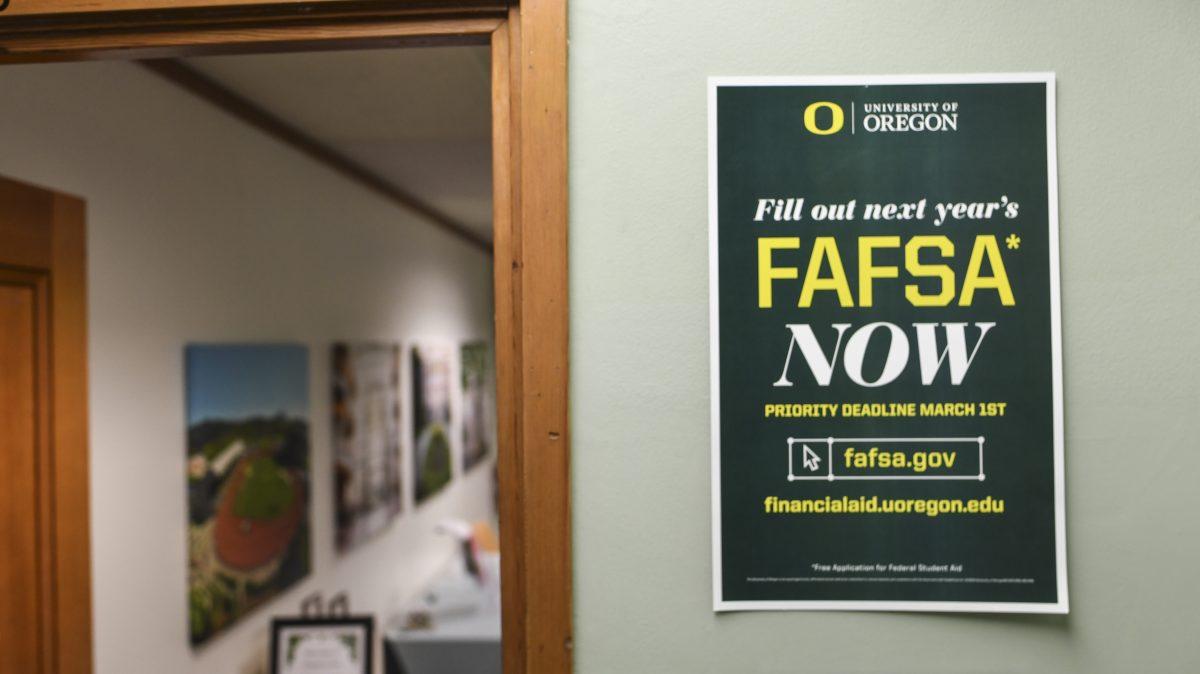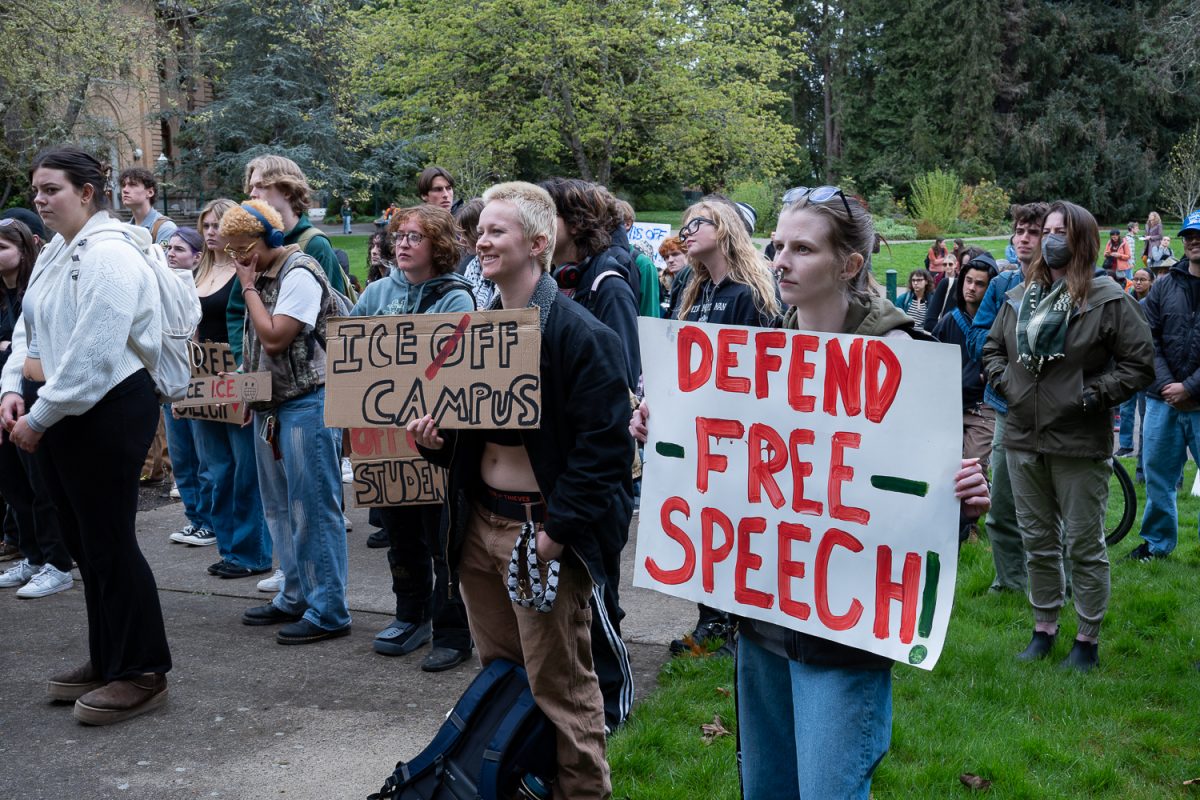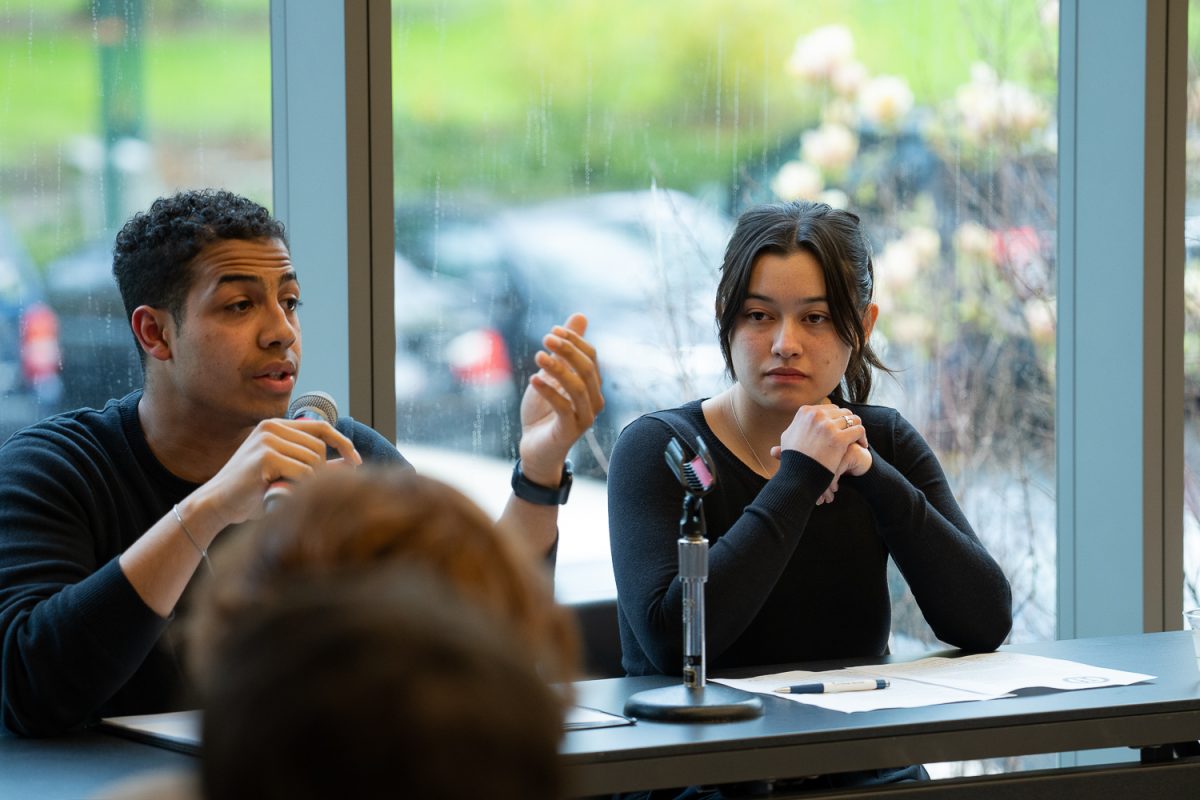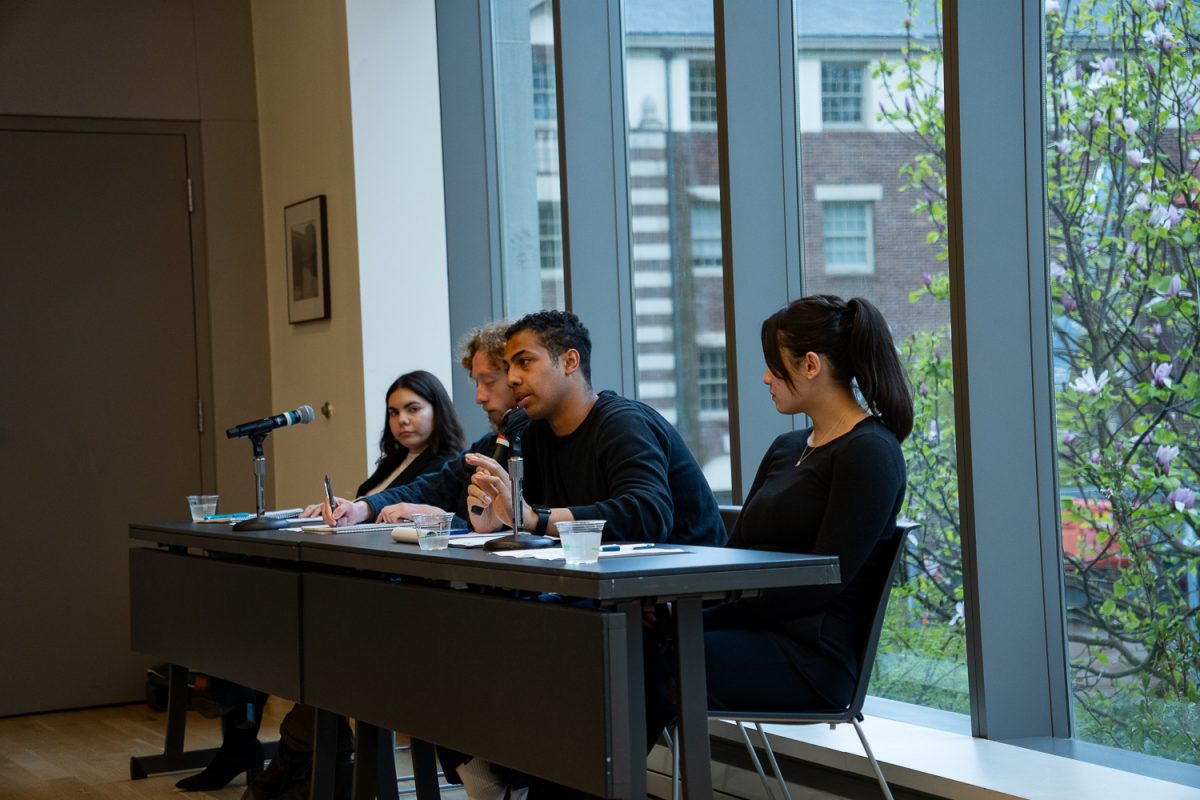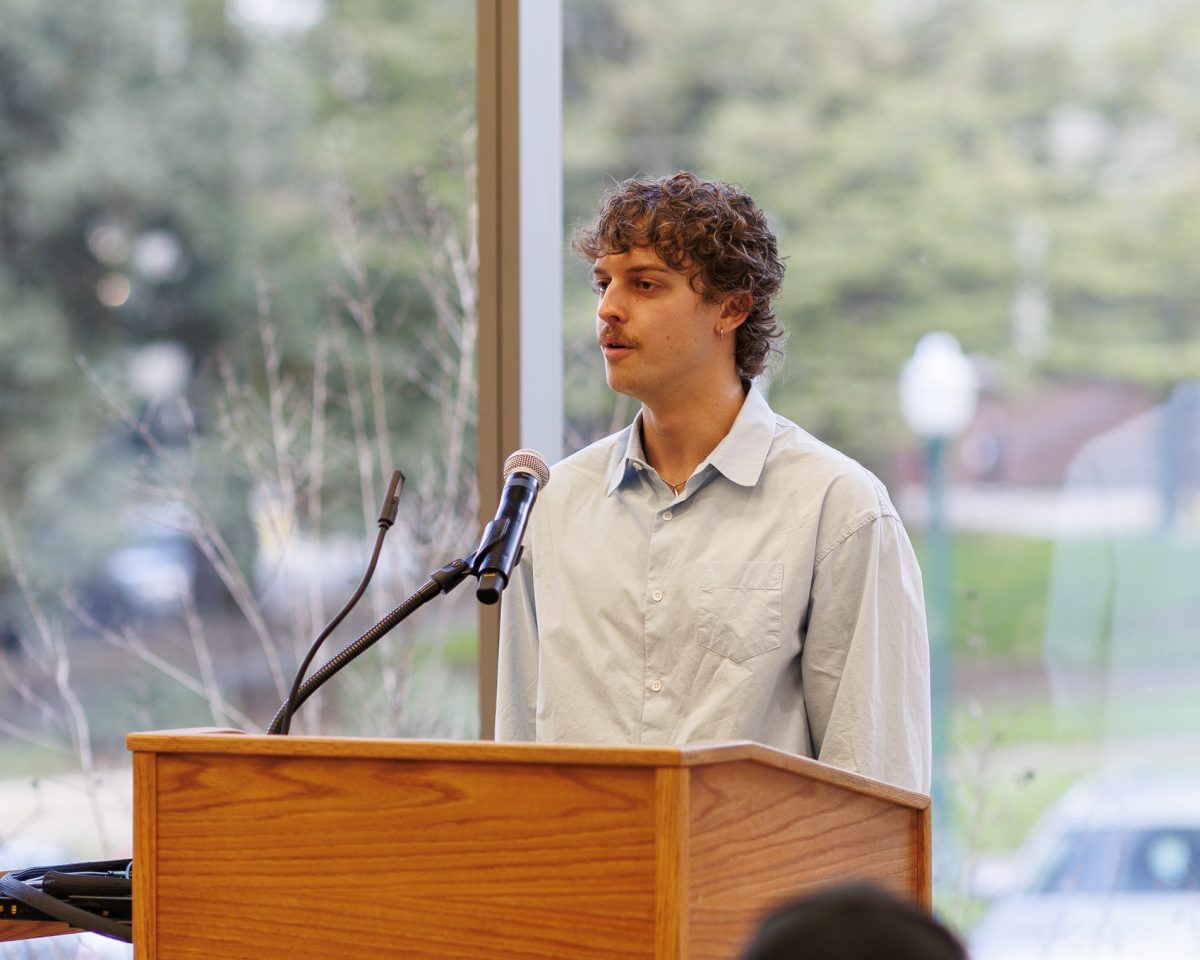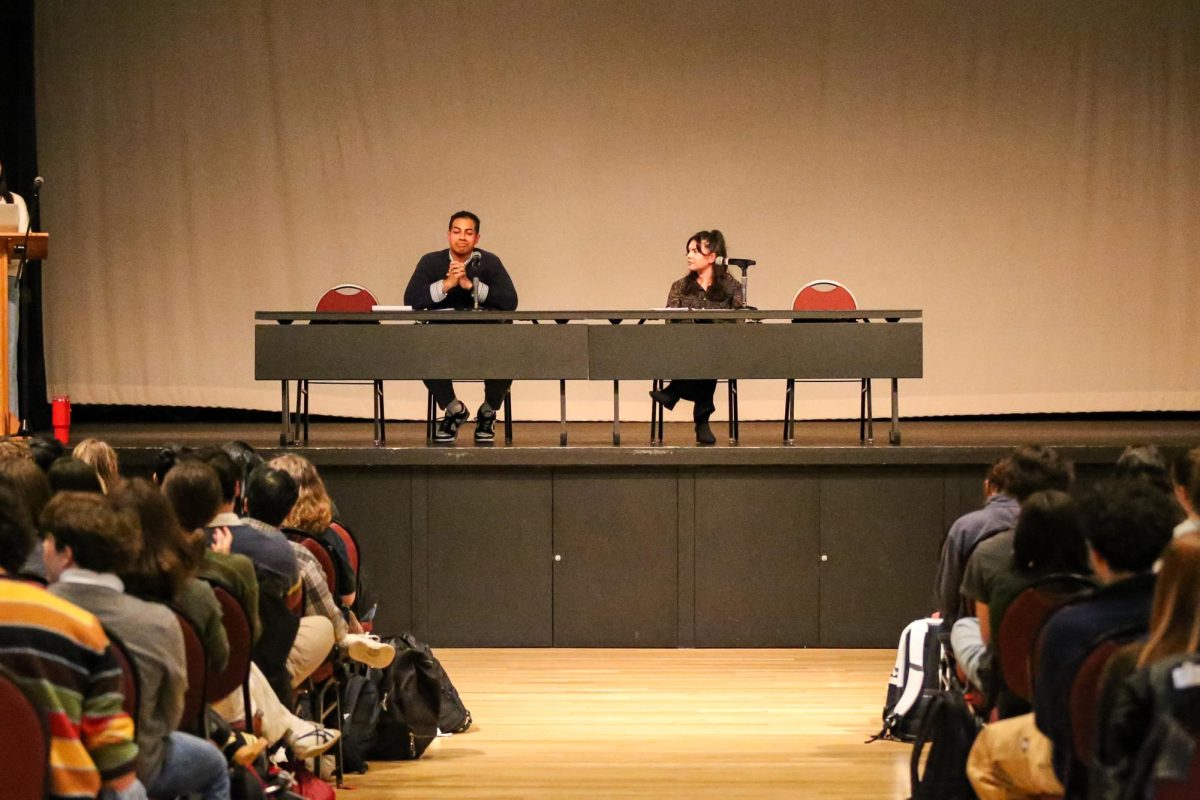The time has come — the FAFSA application is here.
The Free Application for Federal Student Aid opened student applications for the 2022-23 school year on Oct. 1.
The Federal Student Aid section of the U.S. Department of Education helps fund higher education for 13 million students yearly. The federal government’s yearly student grant budget equals $32 billion. Sixty-six percent of college students apply for federal financial aid through FAFSA, and almost 7 million students receive Federal Pell Grants, a grant that doesn’t require repayment.
According to the Office of Student Financial Aid and Scholarships, it costs in-state students almost $32,000 a year to attend UO — including UO costs like tuition and estimated costs like books and supplies — and almost $59,000 for out-of-state students.
Jim Brooks, director of Financial Aid for UO, said 73% of graduate and undergraduate students at UO receive some type of financial aid. UO disburses about $180 million of federal aid alone, with a total of around $250 million each year going to students from federal, state, institutional and foundational aid combined.
To qualify for financial aid, the FAFSA application process will determine whether students are eligible for federal aid, maintain a minimum cumulative GPA, make “satisfactory progress” toward their degree and complete said degree within the maximum allotted time frame. Other financial aid resources for students come in the forms of grants like the State of Oregon Opportunity Grant, scholarships, loans and employment.
The Financial Aid and Scholarships office offers weekly workshops for students to help foster financial wellness, like the upcoming “Take the Fear out of the Repayment Process” workshop on Oct. 27. Financial Aid workshops focus on providing resources for students to help them feel confident in their financial decisions at the university and beyond.
The Financial Wellness Center is another resource for students through the Financial Aid Office. Gilbert Rogers, assistant director for Financial Wellness, said the Financial Wellness Center aims to provide students with tools to promote financial wellness and literacy through a peer model that allows them to train as financial counselors and assist fellow students. Their team of 20 peer financial coaches helps with everything from how to build credit and how to invest to how to repay student loans and budget effectively.
“We provide as much as we can to students early on so that they can manage and navigate college and also be prepared for once they graduate,” Rogers said. “It’s a tailored approach to provide the basics of personal finance to students.”
Brooks said a large part of the Financial Aid Office’s mission is to serve students and help them with finances as they navigate their college experience and balance finances with education.
“We really want to impact students financially,” Brooks said. “Not just in being able to access their education and pay to go to school, but thinking about their finances long-term throughout their lives.”
Brooks’s advice to students worried about their finances includes reaching out to the Financial Aid Office and the Financial Wellness Center, as well as being aware of personal spending habits.
“Don’t fight the battle alone; come talk to us,” Brooks said. “Let us have a chance to talk through the situation with you and see if there’s something we can do.”


